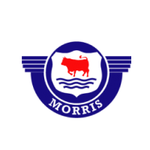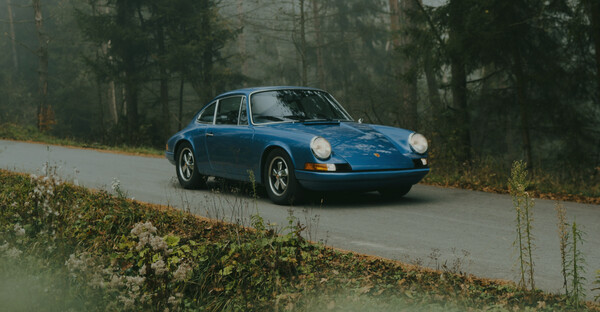Description
1927 Morris Cowley Flatnose Simplified 11. 9hp 3-Seater Convertible.
£9950 PRICE JUST REDUCED BY SOME MARGIN - owner seen car he wants to replace this car with
Comfortable bench 3-seater. Coachwork by Richards
SEE VIDEO walk around this car filmed 6/ 3/ 24 : Video walk around of Morris Flat nose - please ask for link
PART-EXCHANGE CONSIDERED for 1950s Sports Car. What have you?
The Simplified Cowley…extremely rare in the UK - this car came back from Australia and was Swansea registered here in England in 1998
Featured in the April 1992 edition of The Automobile magazine with a 2 page feature by Bill Bishop - he was contacted by the then owner – a Neil Marshall of New South Wales. At the time he was seeking a value of the car with the intention of selling the car. Research then revealed that this roadster was built around March 1927 or possibly a little later as the engine casting dates are 22/ 2/ 27 on the cylinder head and 25/ 2/ 27 on the engine block, equipped with an Australian Richards body.
In 1927-8 William Morris returned briefly to a previously unsuccessful sales idea, that of additionally offering a basic no frills Cowley without the optional extras.
This was known as the “Simplified” or “Plain” Cowley. These cars came without front brakes, shock absorbers, spring gaitors, headlights, temperature gauge, clock, speedometer, wipers, horn or rear view mirror. The saving was £11. 50 and you could only have a blue one in 1927 or a grey one in 1928. You can guess that this is one of the 1927 cars, being blue!
The bodywork actually makes provision for sleeping in the car by removing the front seat back in order to stretch out with driver’s and passenger’s feet into the Dickey seat area, so this car is not strictly equipped as a dickey but could easily be converted. The thinking is that if one was caught out in the Australian bush, two people could easily sleep in the car overnight.
So although the dickey is deleted in this case in favour of sleeping accommodation, the car is still able to carry 3 people with the wider bench seat bodywork. It could be argued therefore that this car is actually a more practical car than the UK narrow bodied offering.
The car appears to have come into the UK and registered here SV 7199 on 7/ 7/ 1998 registered to a lady in Swansea - according to the V5C.
The previous but one owner – a past VSCC President - purchased this car in October 2014 with a view to using it in VSCC Light Car and Edwardian Section events (LCES) but only lent it on one occasion to a friend for the annual Spring Welsh Light Car event in 2015. I was on the event in another car and saw this Morris happily competing, having been driven to Wales and back to the New Forest.
In October 2018 this car was sold to the previous owner to today, who made a number of improvements to the car.
Purchased by the present owner on 12th August 2019, this car now has a brand new £1500 radiator core fitted, a new set of Waymaster tyres, rear wings repainted, new brake linings, a £450 magneto service by Donald Day, a Sigma Engineering carb tune up and a new OSR wheel bearing, new battery, and a £409 oil, grease and cosmetics service.
As documented below in the 2010 HVA auction description, the wood framework was replaced – and appears today to be in strong and robust condition today, road registered to August 2024 with Swansea V5C.
2010 HISTORY OF THIS CAR – written by Herefordshire Vintage Auctions in their 2010 auction description
The Flatnose range of Morris Cowley and Oxford cars were introduced for the 1927 season, and were a radical update on the charismatic and very attractive but more than a little antiquated ‘Bullnose’ models which had been produced since the start of Morris production.
The main improvement was to the chassis, which was extensively redesigned with an upswept rear end to accommodate underslung semi-elliptic springs. This, coupled with balloon tyres and four wheeled brakes carried over from the last of the Bullnose cars gave the new models greatly enhanced roadholding and ride comfort. The Hotchkiss-derived side valve engine of 11. 9 HP (1550cc) and the three speed gearbox were also carried over from the previous models.
The new cars appeared instantly more modern, and they were larger and more practical than the older model. They sold extremely well as would be expected.
The “Simplified” no-frills Cowley was also available at a lower price, with rear wheel brakes only. SV7199 is a fine example of one of these now almost extinct, simplified Cowleys, and was shipped to Australia in March 1927 as a chassis to have a locally built body fitted, thereby giving the car local content and satisfying import regulations. This local coachwork was slightly wider than the factory 2-seater, allowing three seats abreast in the front. The car could also be converted into a double bed for use on long journeys by combining the front seating and the rear boot areas. This car had a long and strenuous career in Australia, as recounted by the then Australian owner in the entertaining Simons story. Eventually, the simplified Cowley was repatriated to the UK, alongside a period Crossley, and after being bought for restoration sight unseen, was left in the shed for some five years before being acquired by the next owner, who, with his wife undertook an extensive and very successful rebuild. This was not without difficulty as the car was damaged in a bush fire in the 1960s, and the Australian coachwork of course of local construction, using probably American sourced pressings. The engine is believed to be an experimental model, and has unusual stamps and markings, as explained in the Simon story and seen in the photographs. This important car is believed to be the only surviving ‘Simplified’ Cowley to exist as other examples were probably converted to four wheel braked cars in period. The car is superbly restored, running sweetly, and in current use, and apart from its unique specification, also has very attractive and unusual Australian coach work.
_______________________
Although we attempt to ensure accuracy of any statement or detail, the customer must make his or her own judgement in purchasing this car. The purchaser of the above car understands that he or she is purchasing a historic motor car with components that are up to 97 years old and sold as a collector item. There is no warranty given or implied due to the age of the car.


















